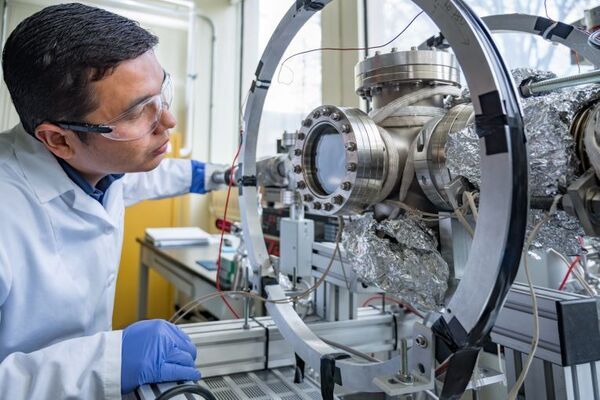Dissociative Electron Attachment Spectrometers

The Lab houses a number of high vacuum chambers for dissociative electron attachment (DEA) studies which allow detection of charged particles, both negative and positive ions, and also neutral radicals formed from molecules upon electron irradiation. Radical detection is possible by a quadruple mass spectrometer attached to a chamber, which is configured with an integrated electron impact ion source. Neutral radicals are ionized in the ion source by electron impact or electron attachment, forming cations or anions respectively. Based on products from both approaches, the molecular precursor can be identified. The mass spectrometer is also equipped with ion energy distribution measurement, which can give information on ion kinetics of fragments and thus more insight into the details of the DEA process.
Our recently developed velocity map imaging (VMI) spectrometer enables us to further investigate the dissociation dynamics triggered by electron attachment to gas-phase molecules. Employing a position-sensitive detector, ions sharing identical velocity vectors are mapped onto a singular point on the detector, regardless of their origin. Through this method, detailed insights into the kinetic energy and angular distributions of negative ions formed in the DEA process are obtained, offering the opportunity to reveal the molecular symmetry of resonance states based on images obtained